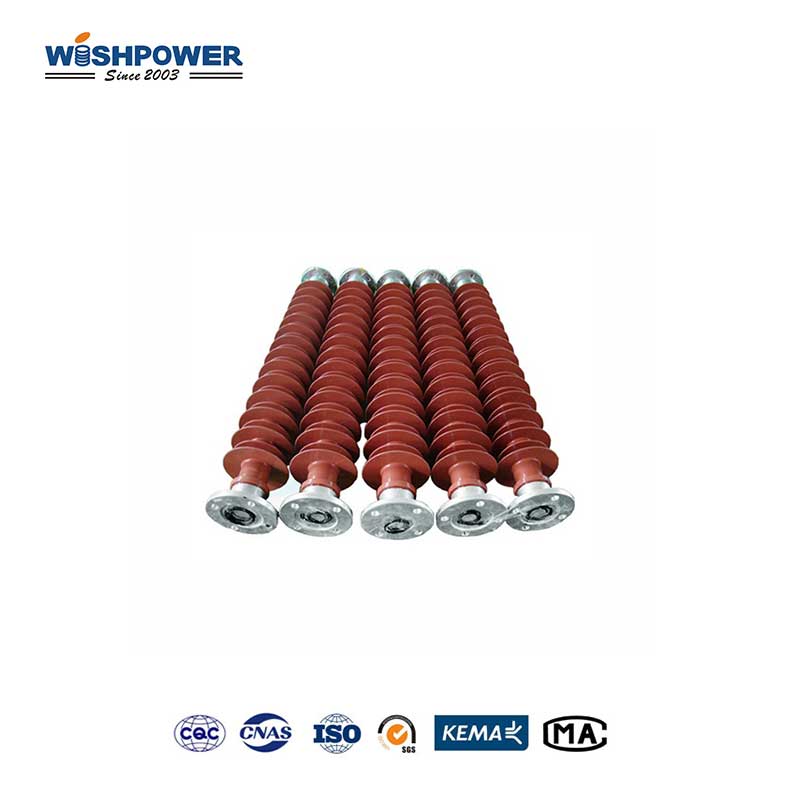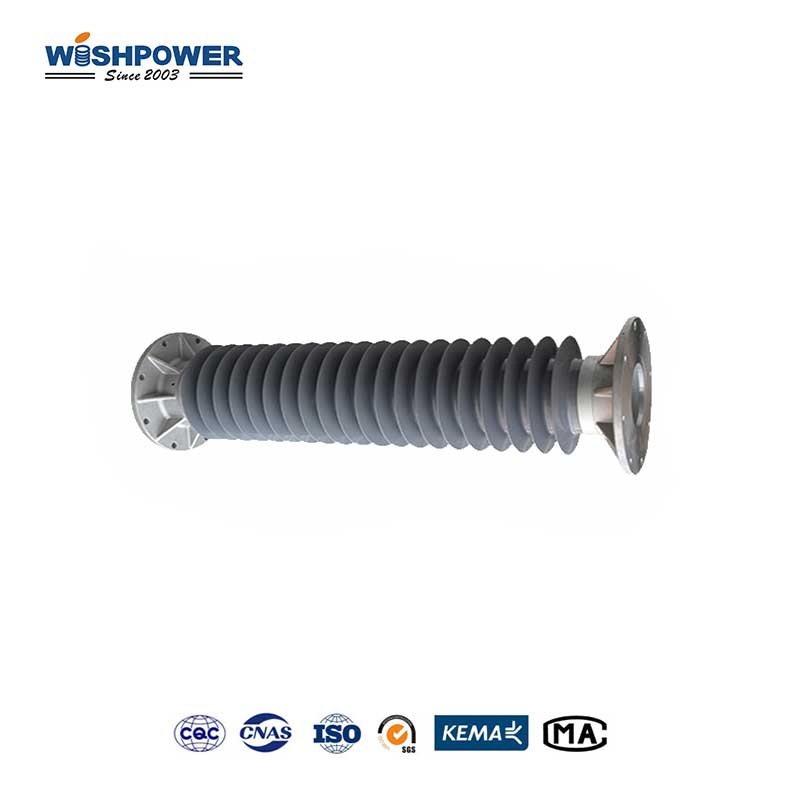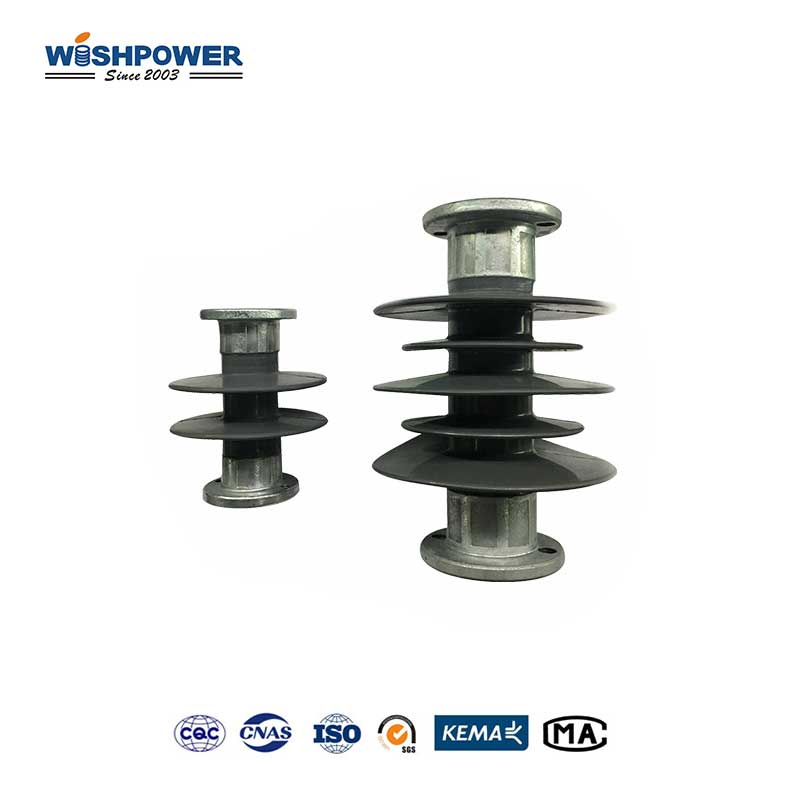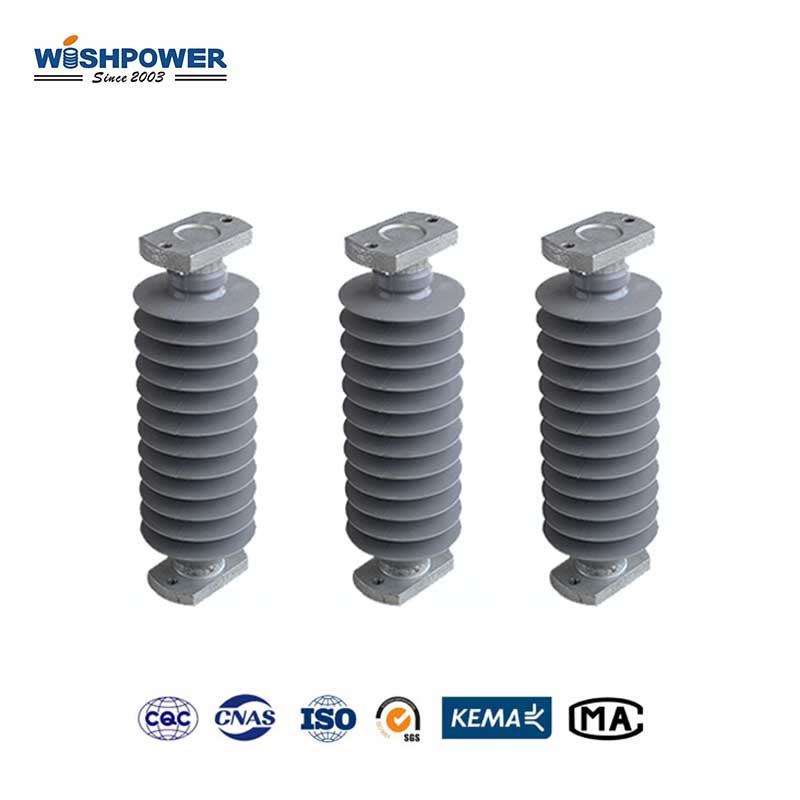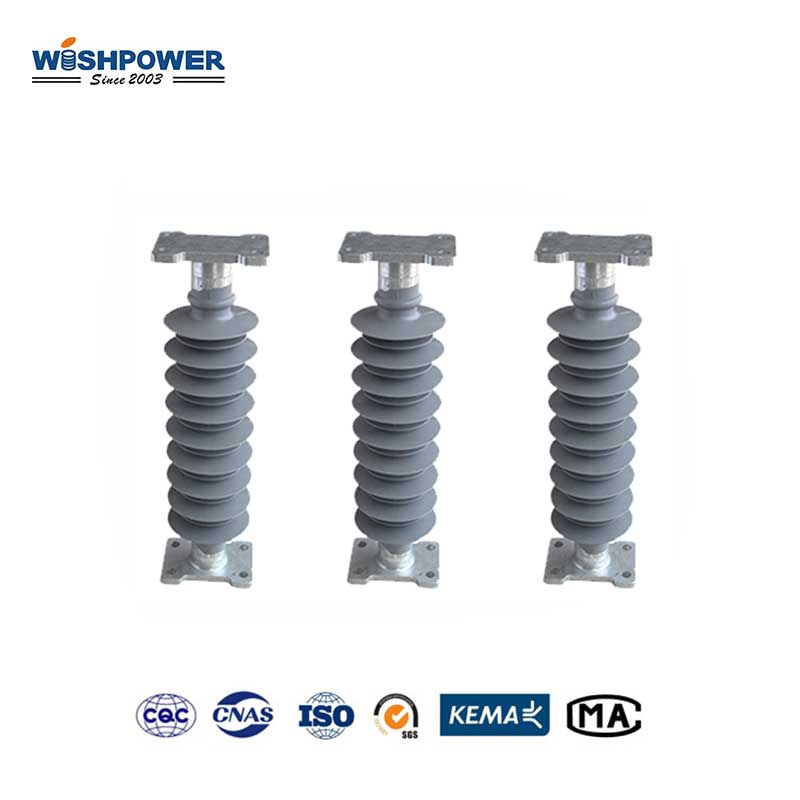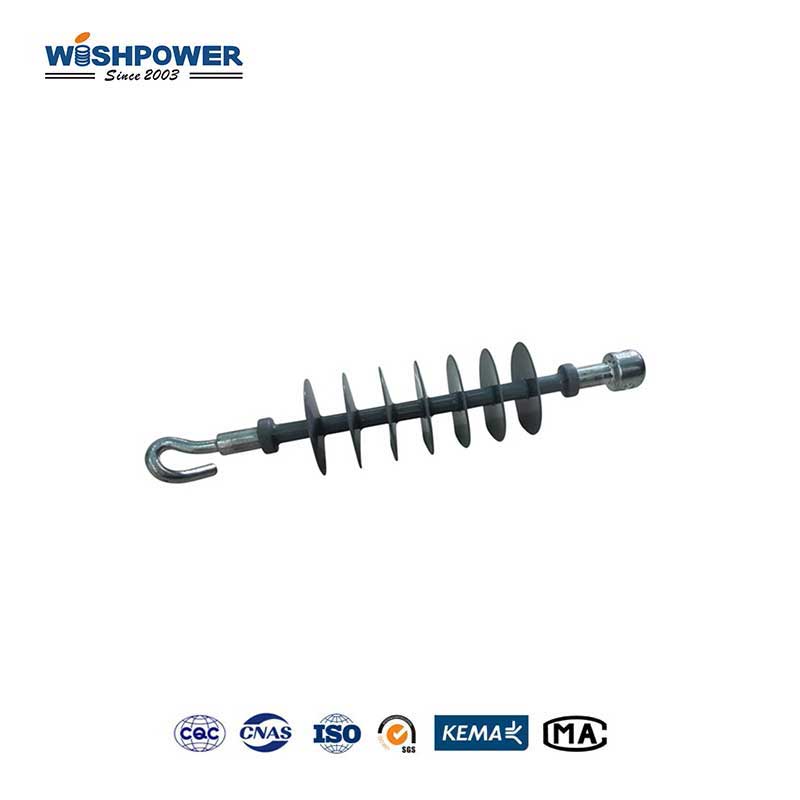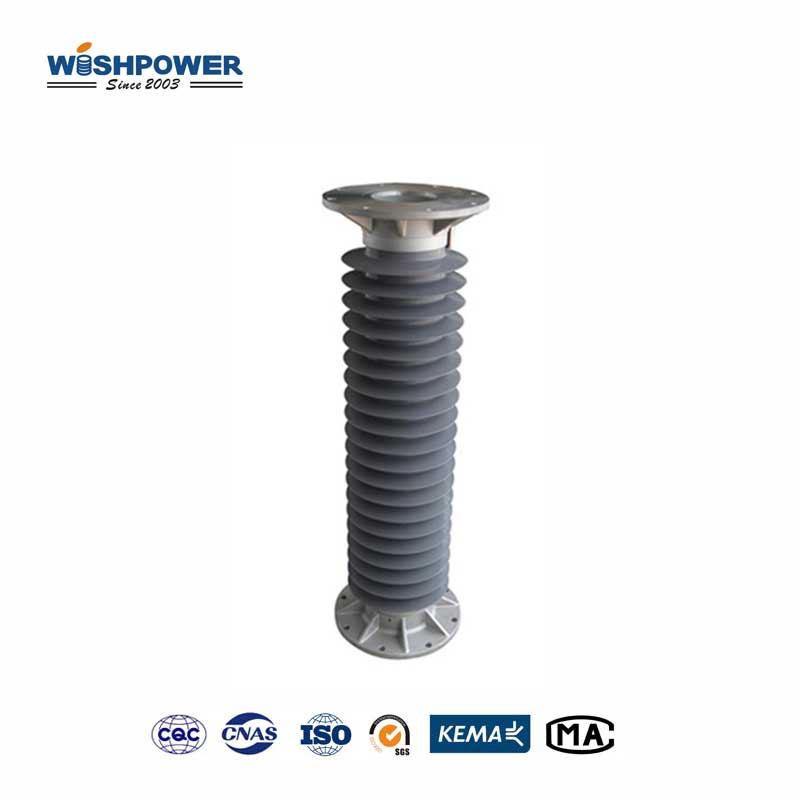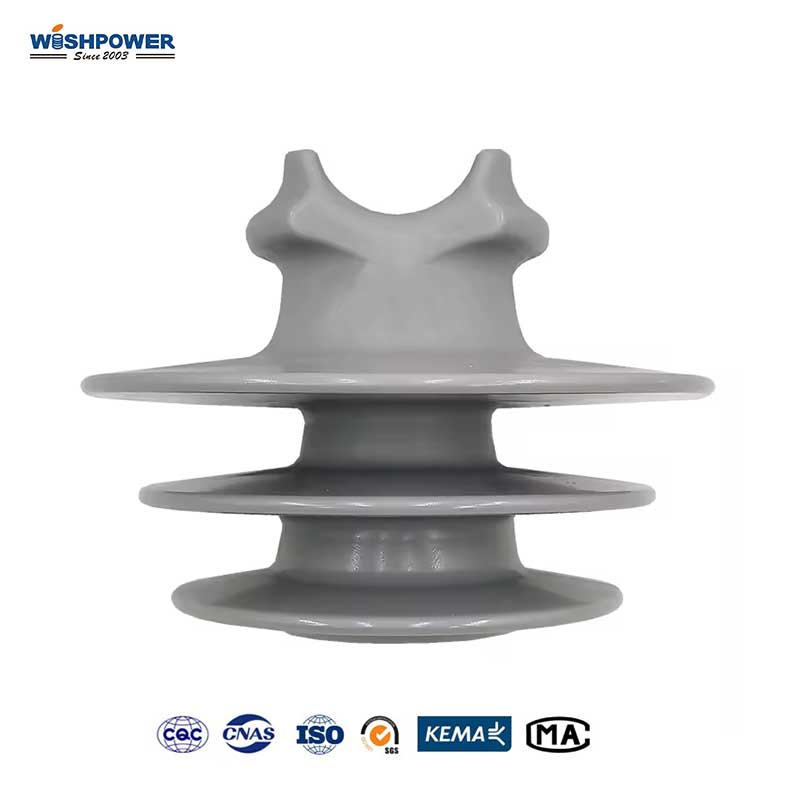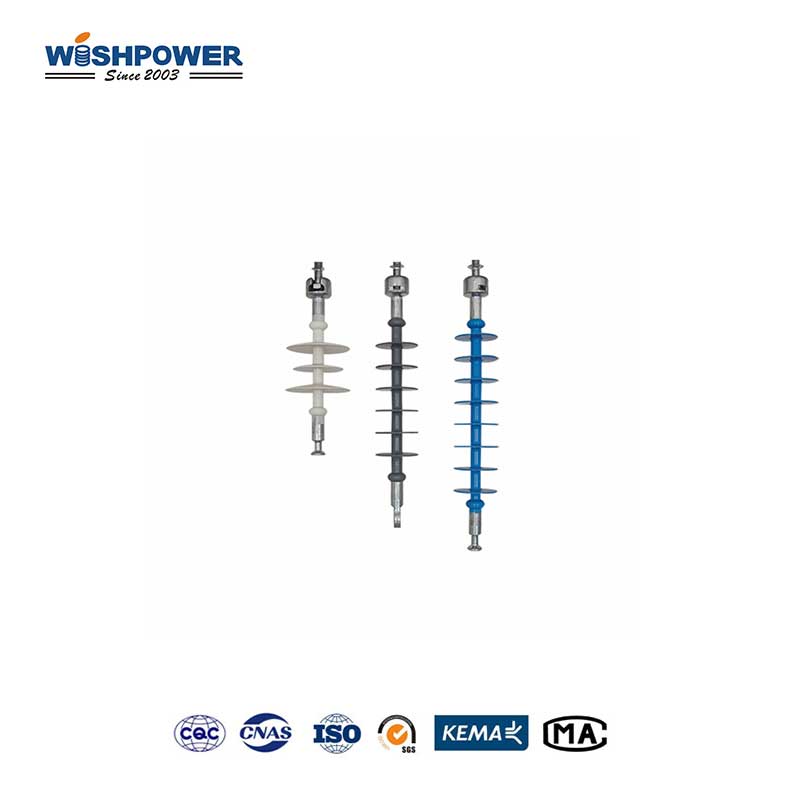Product Specifications
| Core |
FRP rod |
| Sheds |
High-quality silicone rubber |
| Fittings |
Hot-dip galvanized steel |
| Voltage Rating |
15 / 25 / 35 kV |
| Dielectric Strength |
40 kV/mm |
| Creepage Distance |
600 mm |
| Tensile Strength |
50 kN |
| Compressive Strength |
30 kN |
| Torsional Strength |
20 Nm |
| UV Resistance: |
ASTM G154 |
| Pollution Class |
Light to Moderate |
| Temperature Range |
–20°C to +40°C |
The table above is just one of our product parameters. If you want more information, please get in touch with info@wishpower.net or download the file below.
What is the Composite Post Insulator?
Composite post insulators are special devices mainly used in high-voltage applications to give mechanical support to conductors and equipment installation in transmission and distribution systems and provide electrical insulation. This insulator is usually composite made using glass fiber reinforced resin core and silicone rubber or similar materials as an outer shell to protect them from all weather and electrical insulation. It offers durability and stability under mechanical loads and resilience to mechanical shock vibration and thermal changes. Under dynamic conditions, for example, areas with severe climate fluctuations or earthquake-prone areas this makes them very reliable. Moreover, composite materials are lightweight and easier to handle, transport, and install, resulting in lower logistics costs and less intensive structure required for supporting heavier materials. It has greater flexibility in space-constrained installations such as compact substations and urban environments.
Why is it called a “post”?
This is a post insulator because its structure and functions are similar to a post. A post insulator is a basic part of equipment for grounding insulator items, and the main function is to stand upright vertically, bear the mechanical load of the line or equipment, provide stable support, and direct in a transverse direction. This is usually used in the air to fix conductors or electrical equipment and to restore them away from the ground or other live parts. Similar to an upright post, its design needs to withstand the electrical insulation requirements and needs to withstand mechanical forces induced from all directions such as horizontal and vertical bending, and tension. Its vertical structure also makes it ideally suited to high-voltage lines and substations. Not only it can withstand wire or equipment weight, but also is immune to external environmental factors such as wind, rain, and snow.
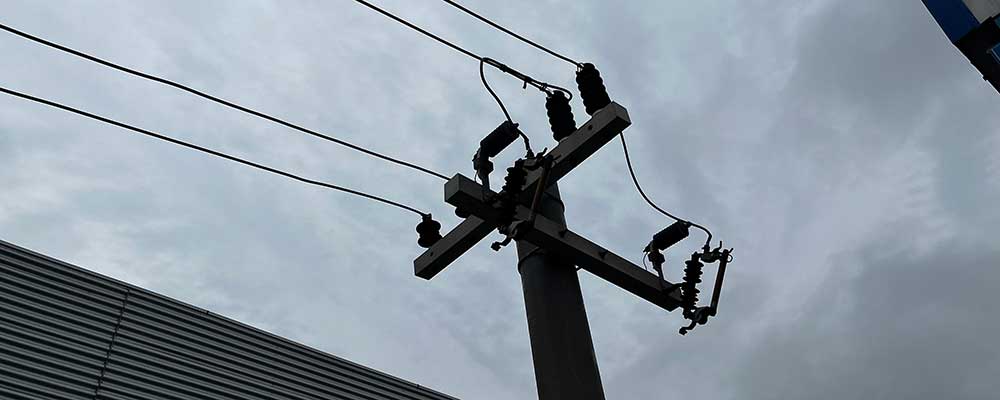
Composite material properties
- Hydrophobic surface
Silicone rubber composites have a high hydrophobic surface that does not allow water accumulation, does not contribute to film formation, and leads to reduced leakage current.
- Easy to handle and lightweight
That’s because, unlike traditional porcelain, composite materials are much lighter and can travel easily, be installed with ease, and be managed without the need for heavy equipment.
- Aging and environmental stress resistance
The polymer line post insulator has good UV, pollution, and environmental conditions resistance with longer service life and minimal performance degradation.
- Shock and vibration-proof
Composite materials resist mechanical shock and vibration as a result of their flexibility and are suitable for installation near transportation, railways, or earthquake zones.
Post-specific properties
- Vertical structural support
The insulator is a stable, vertical support for high-voltage conductors and electrical equipment on the ground, designed to be installed upright and subjected to mechanical loads.
- Also mechanical strength against bending forces.
It is constructed carefully to resist bending forces as high as controllable and to resist lateral and torsional loads to provide stability for heavy equipment or high-voltage conductors attached to it.
- Compact, space-saving design
It has a slender columnar structure which occupies less horizontal space than other types of insulators and is thus suitable for installation in compact substations or confined areas such as in urban environments.
- Load bearing capacity
This is intended to withstand the vertical weight of heavy electrical components, holding a vertical alignment and stability good under the weight.
- Multiple mounting options
The composite line post insulator can be installed on utility poles, equipment racks, and even in substations as support for transmission lines or any other electrical settings in substations.
About Wishpower

Certificate

Hot Tags: Composite Post Insulator, Composite Insulator, Thailand, manufacturers, ISO factory, wholesale, KEMA, high quantity, best, price, low to high voltage






